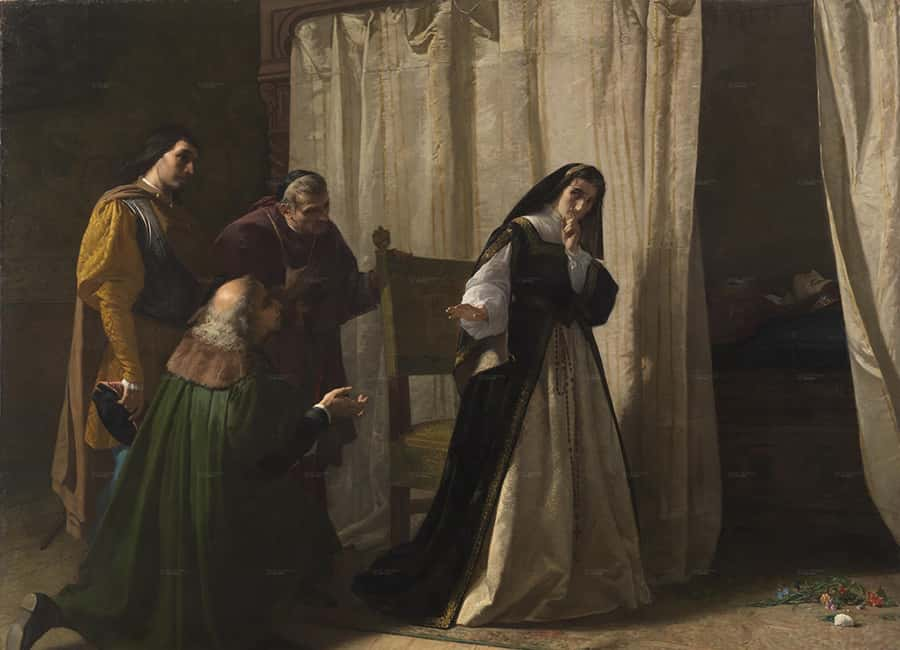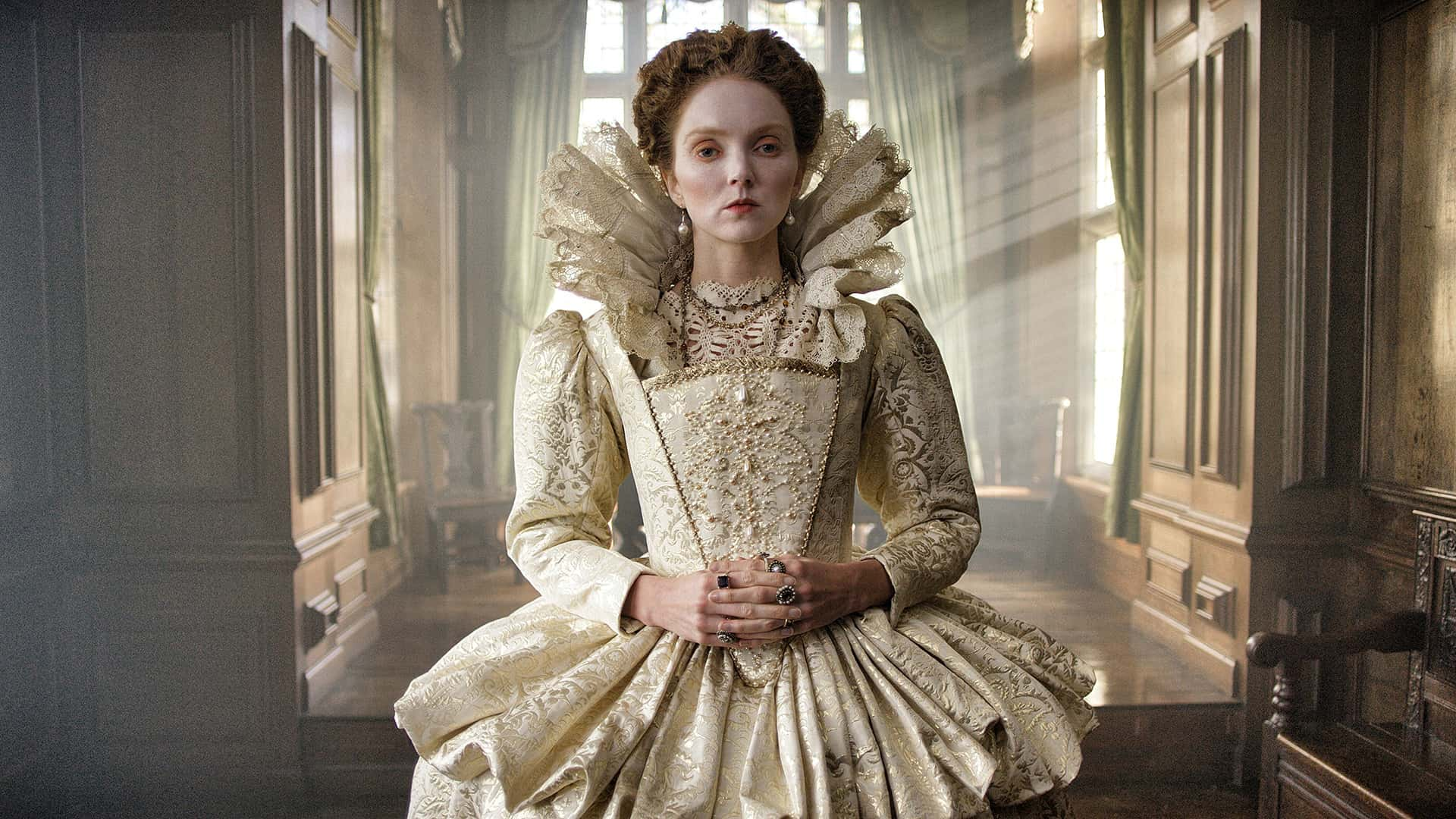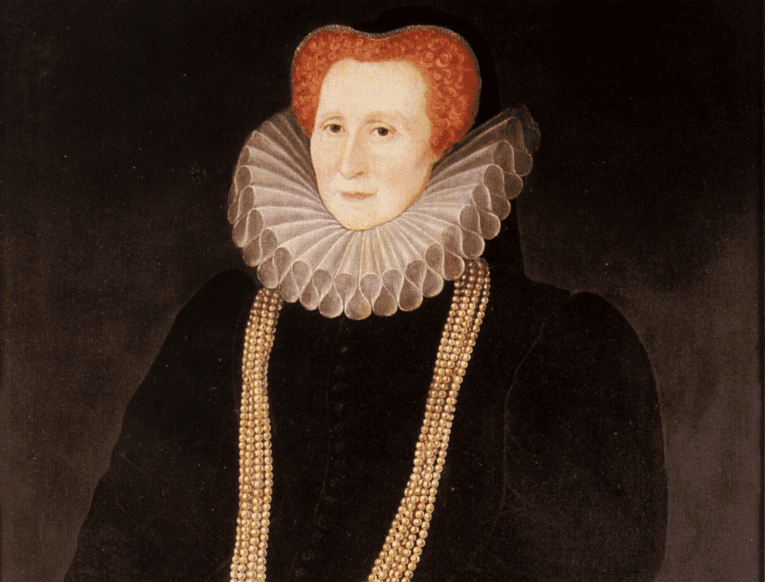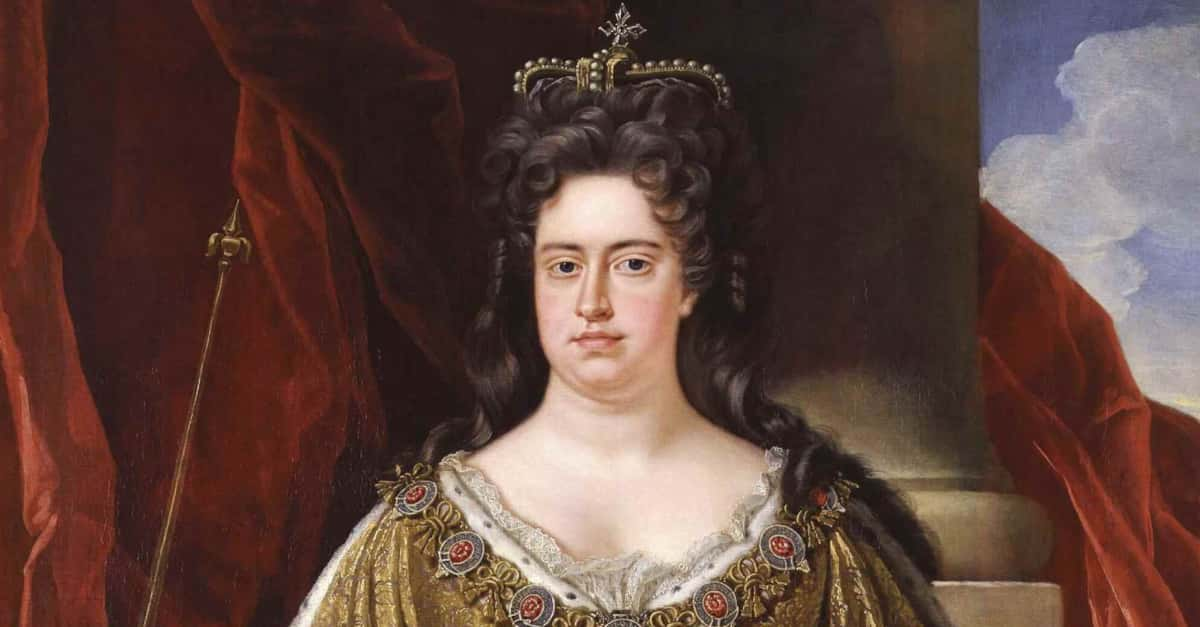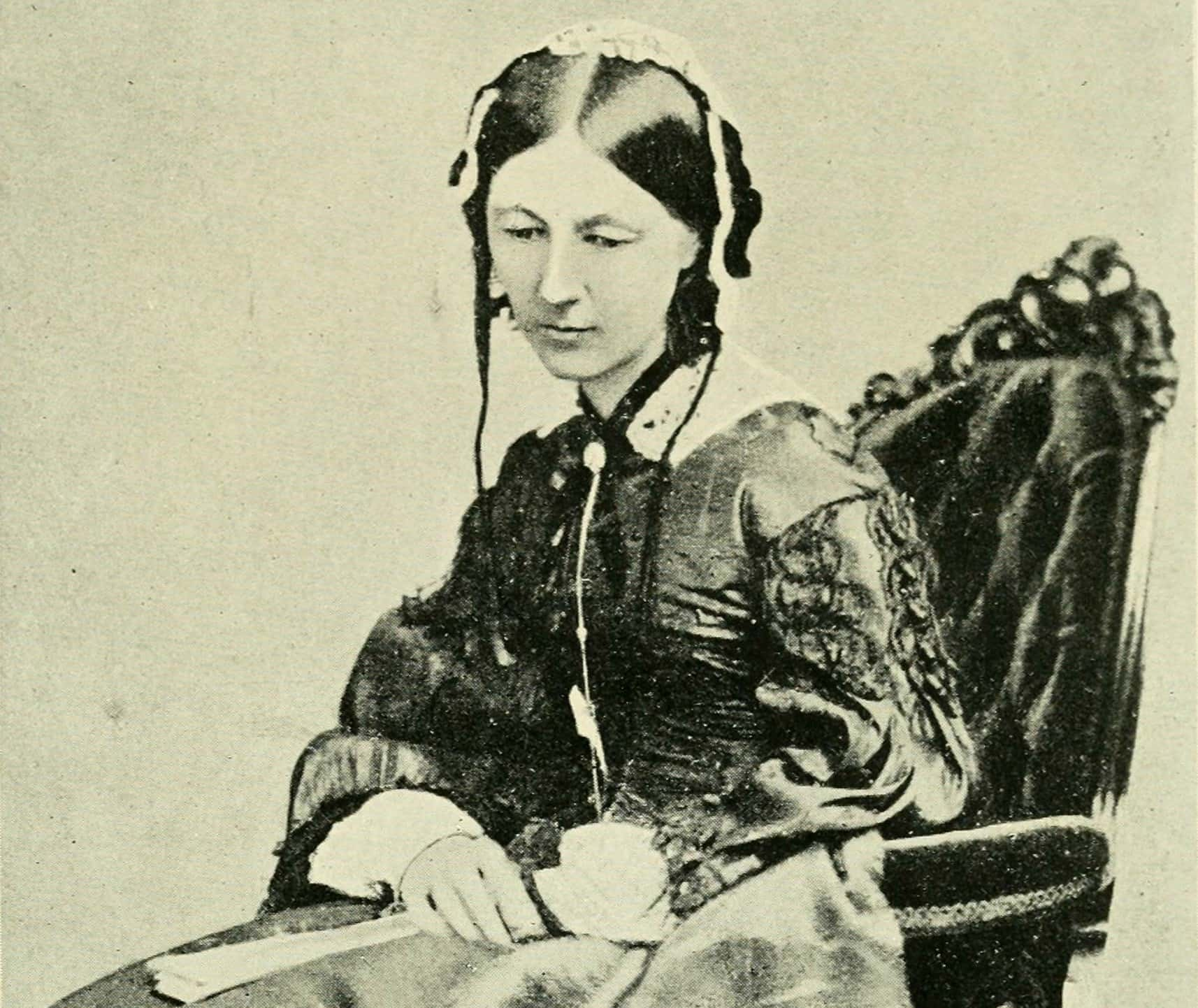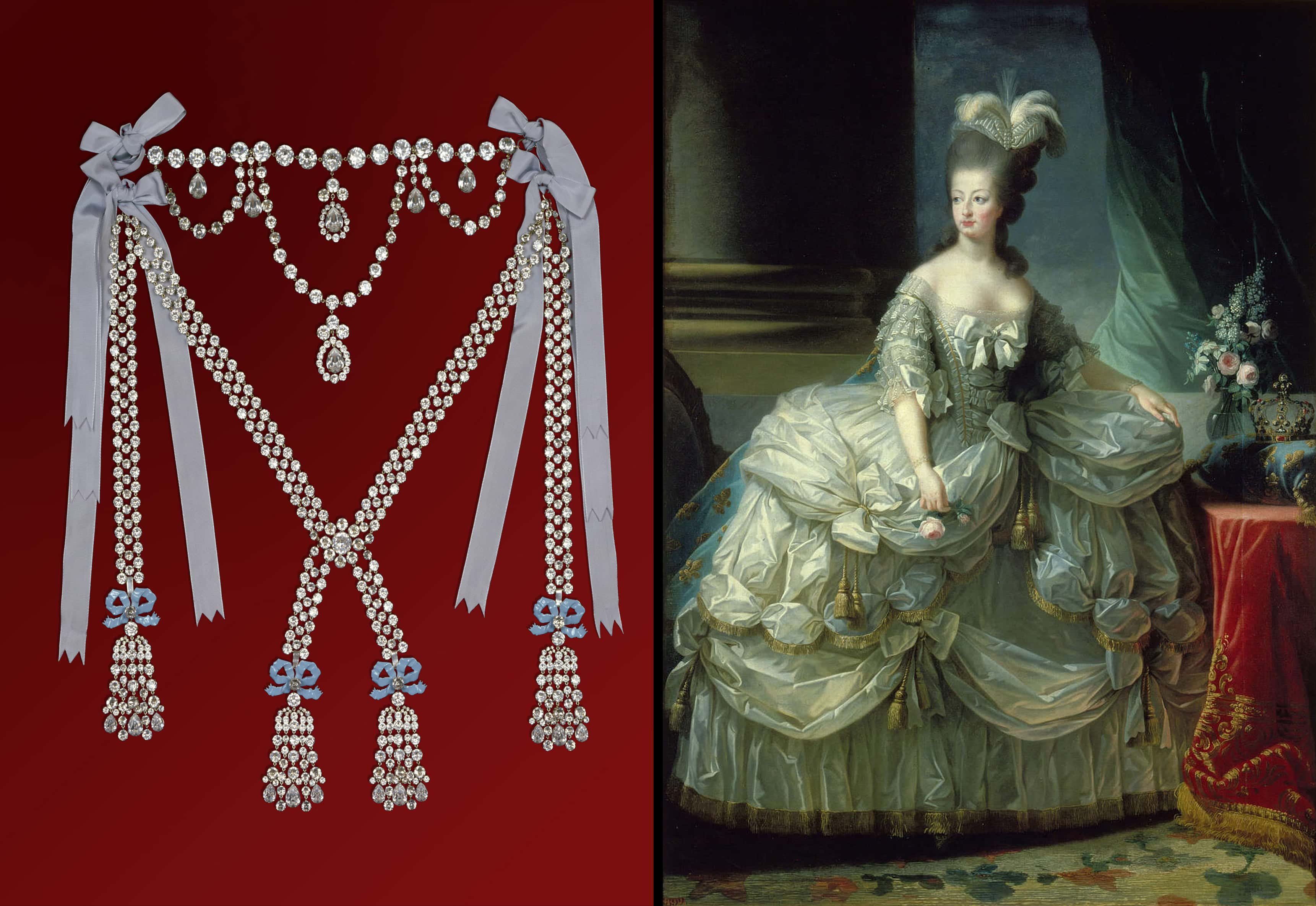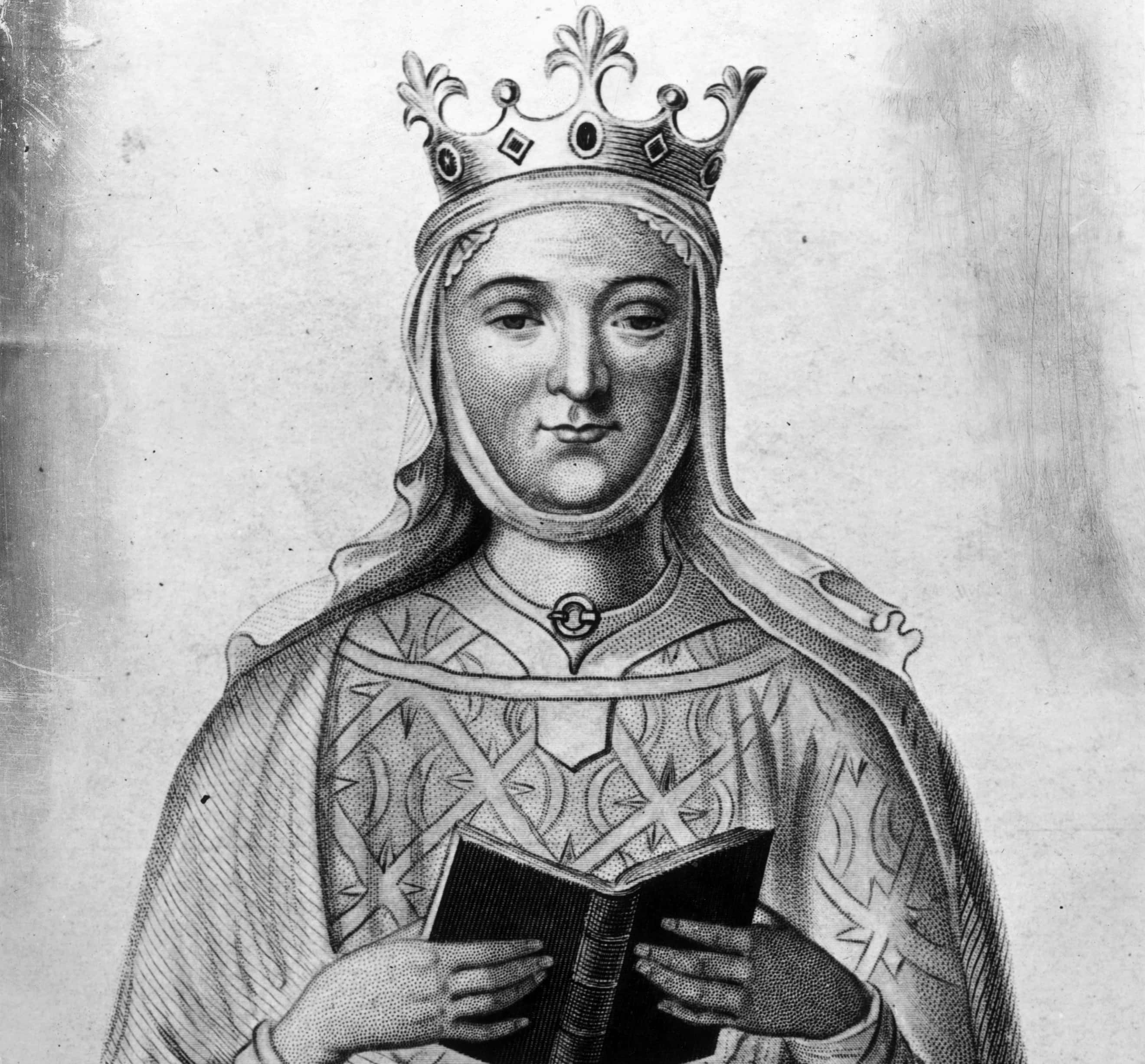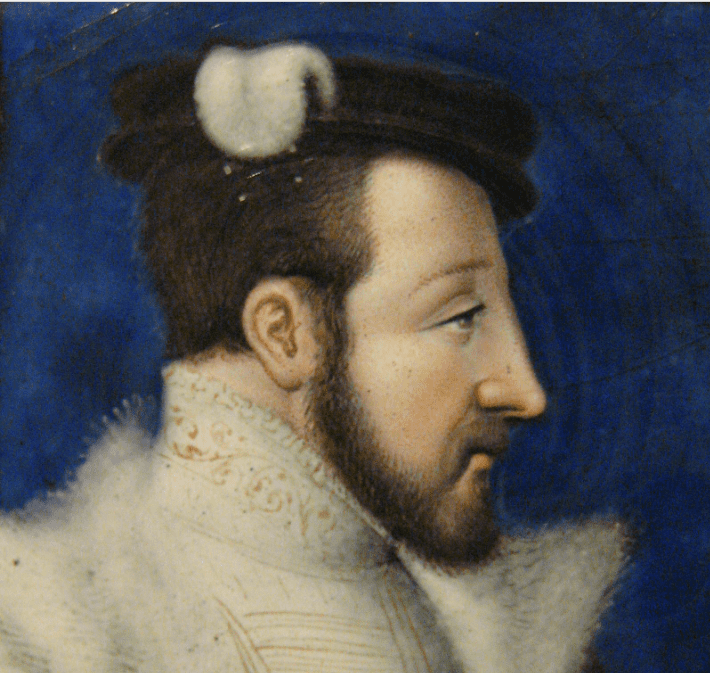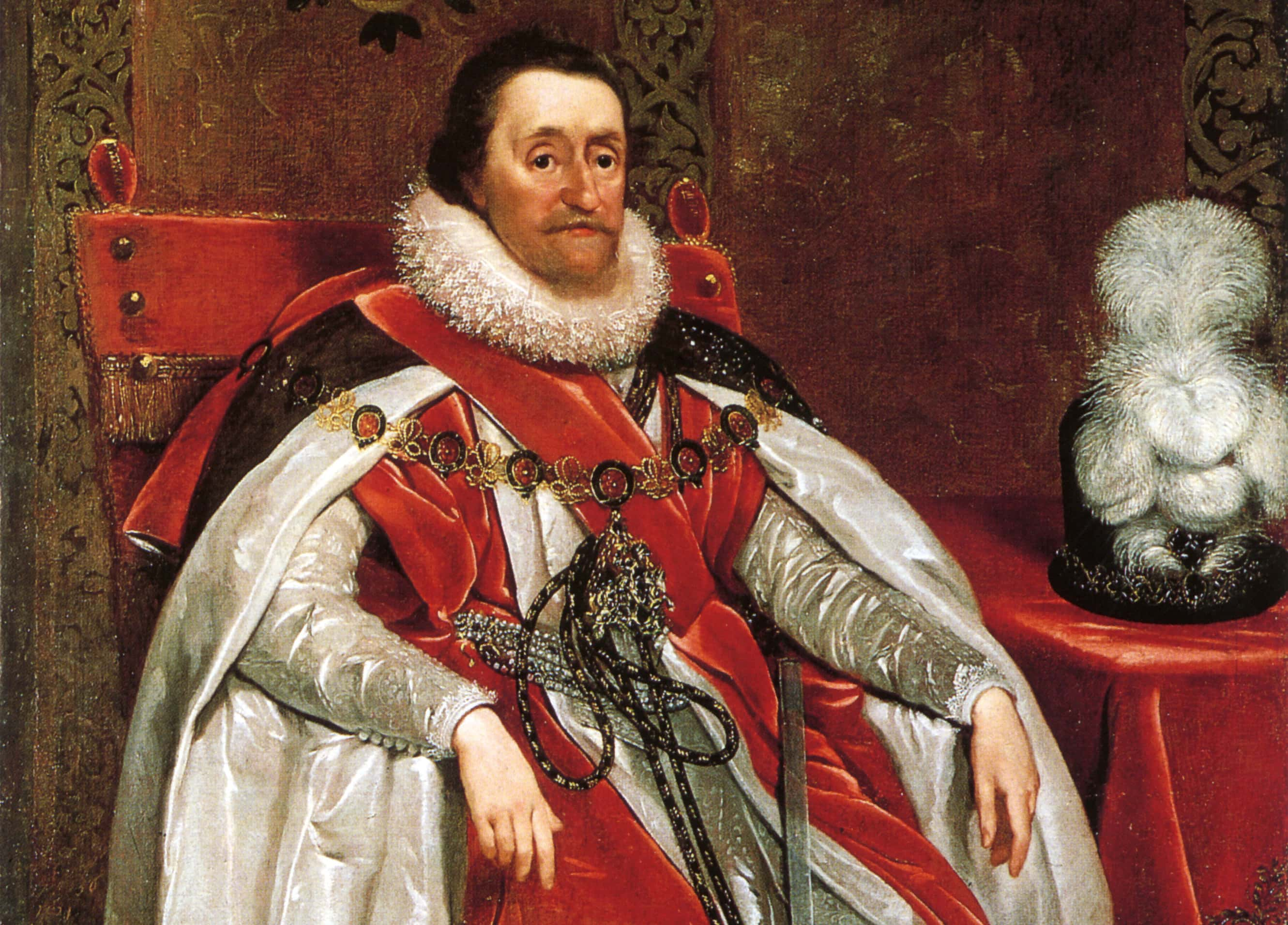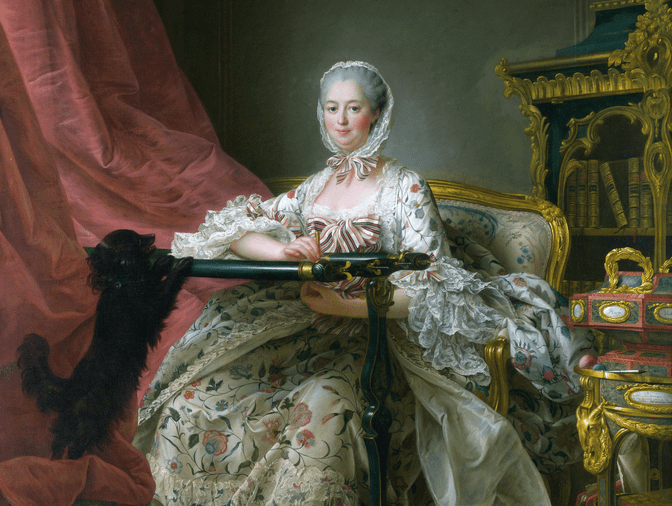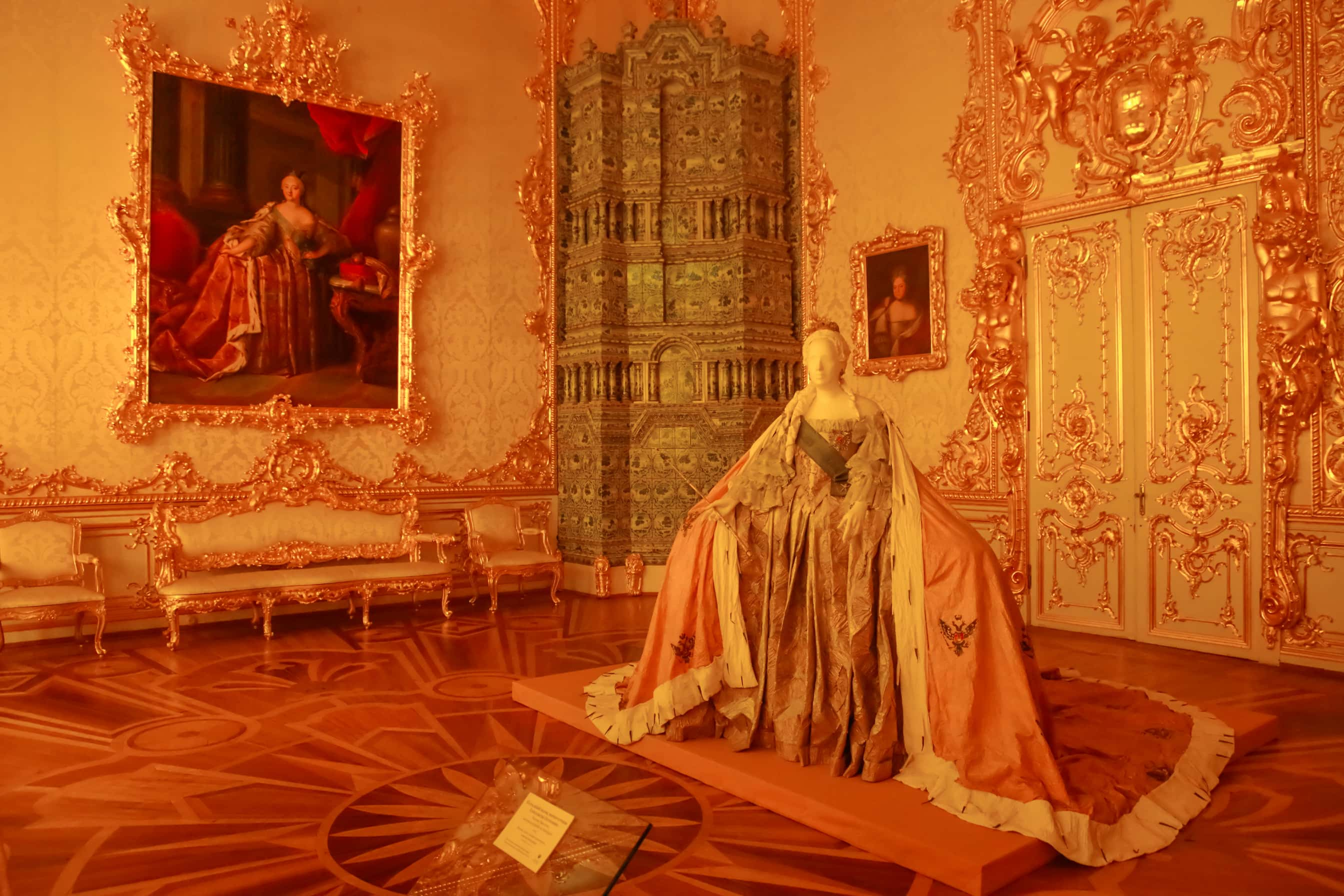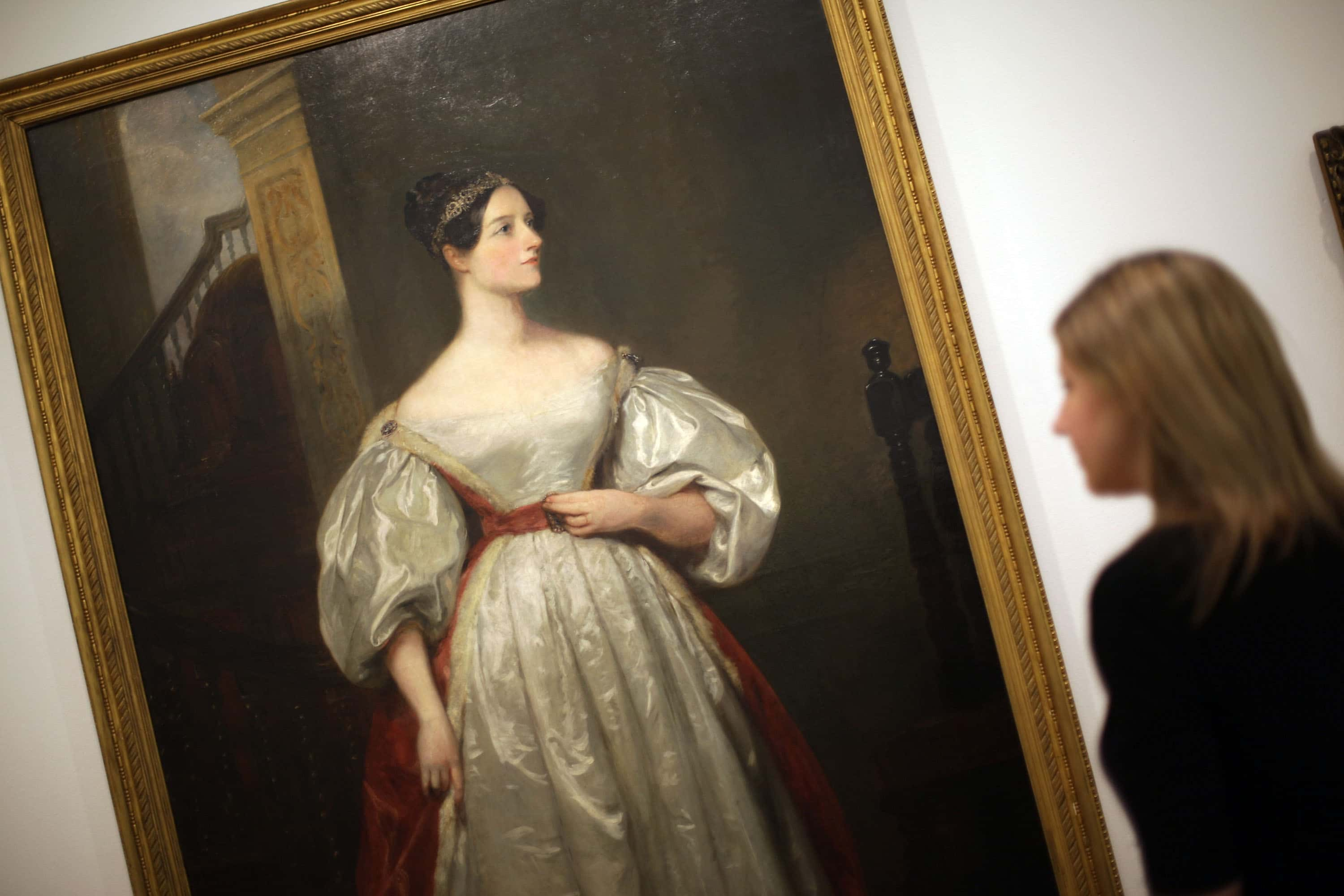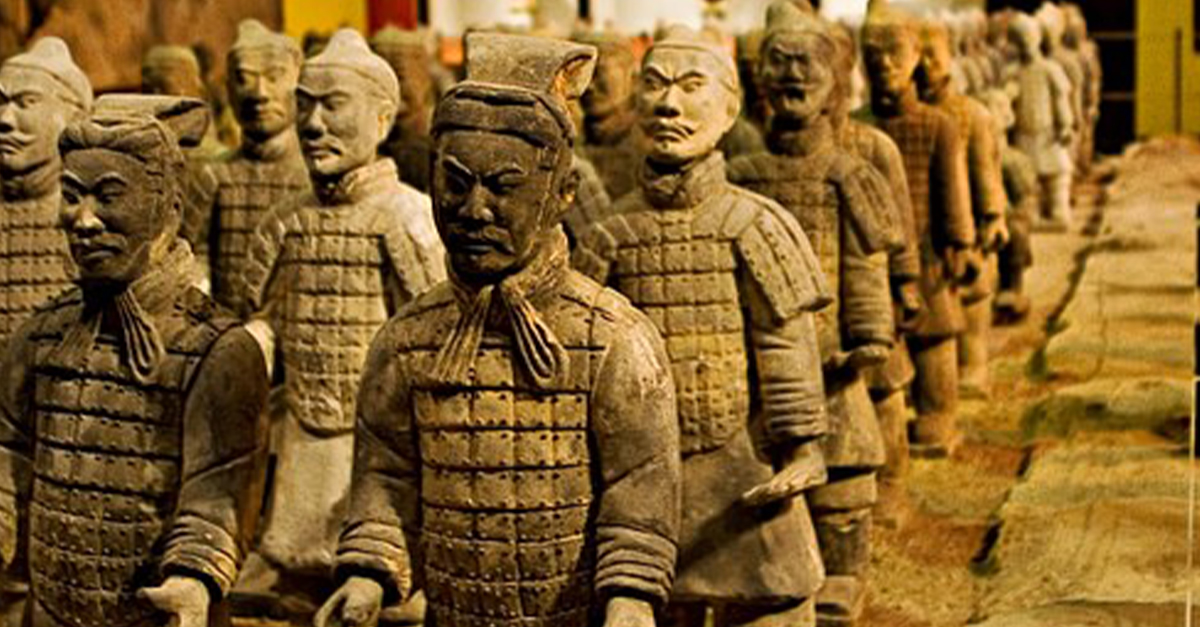They say that behind every great man, there's a great woman. Their stories haven't always been told, but powerful women have been helping to shape the world for millennia. From ruthless queens to devious courtesans to swashbuckling pirates, these women from across the annals of history were not ones to be messed with!
1. No Regrets
Henry VIII's fifth wife Catherine Howard was executed on February 13, 1542. Unlike her cousin, Anne Boleyn, Catherine Howard remained indignant to the very end. Her last words, supposedly, were “I'm gone like a queen, but would rather have passed the wife of a Culpeper,” in reference to her adulterous lover. How…sweet?
2. Good Enough to Kiss, Not to Bury
Some carry their grief with them everywhere. In the case of Queen Joanna of Castile, this was not just a metaphor. Taking the passing of her beloved husband Phillip the Handsome really hard, Joanna had her late hubby dug up and his coffin opened several times to kiss his beloved (decaying) face. From that moment on, she brought his coffin with her everywhere, even her bed.
Only years later did she return Philip to the ground—burying him right outside her window.
3. Frozen
Anna of Russia ruled as empress from 1730 to 1740. In the most famous example of her insanity, she set up an old prince with her maid, organized the wedding, and had a special palace made of ice for the ceremony. Then she made the wedding party dress like clowns and spend the night in the ice palace during one of the harshest winters Russia had seen in years.
And we thought Elsa was the ice queen.
4. Wiped-out Plot
In 1586, a plot was hatched to assassinate Queen Elizabeth I and to place Mary, Queen of Scots on the English throne. Mary might have been able to feign innocence, seeing as she was imprisoned, but a letter sent by Mary while in lock up revealed that she authorized the wiped-out all the same. It sealed her fate, and she was sentenced to capital punishment.
5. Poor Execution
Mary's execution wasn’t a clean one. When the executioner took his first swing, he missed, and it hit her in the back of the head. He swung again, but the head hung on. Finally, on the third swing, he managed to get the job done. But the humiliation wasn't over: He reportedly held the head up by its tresses and said, "God save the Queen," but it turned out that Mary had been wearing a wig. The head toppled to the ground, revealing short grey hair.
One eyewitness account also added that Mary's lips kept moving in the minutes after her beheading.
 Mary Queen of Scots (2018), Focus Features
Mary Queen of Scots (2018), Focus Features
6. Queen’s Best Friend
Mary’s dog, a Maltese terrier, remained loyal to her through the execution, and the executioner later discovered him hiding under her dress. No matter how hard he tried to chase him off, the dog refused to leave his mistress and reportedly lay down in a puddle of her blood.
7. Connections
Julie d'Aubigny's father Gaston worked as a secretary to Louis of Lorraine. Louis was not only the Count of Armagnac, he was also known as the Grand Squire of France. This meant that Louis was based at France’s royal court, managing the Royal Stables, which at the time was nothing to sneeze at.
8. Arya Stark, Is That You?
Because her father was responsible for training the court pages, d’Aubigny managed to get the same education as these boys, despite being a girl. Aside from dancing, d’Aubigny also learned how to read, draw, and fence with swords—which she got very good at. We can only assume that she nicknamed her fencing sword “Needle".  Madamigella di Maupin (1966), Jolly Film
Madamigella di Maupin (1966), Jolly Film
9. All at Once or One at a Time?
In 1695, d’Aubigny attended a society ball where a beautiful woman caught her eye. She proceeded to kiss the lady, much to the shock and outrage of three noblemen who had their own eyes on said lady. All three of these men, feathers all ruffling, challenged d’Aubigny to duels. The master swordswoman happily accepted.
Of course, she then beat all three of them.
10. Surprise!
During her time putting on fencing exhibitions, d’Aubigny was accused of being a man. One man claimed that no woman could be as skilled with a sword as d’Aubigny was. Wasting no time, d’Aubigny took off her top and flashed the crowd to prove that even though she was wearing men’s clothes, she was definitely a woman.
11. Them’s Fighting Words
One of the most famous anecdotes about d’Aubigny is when she found herself in the town of Villeperdue. She was still wearing men’s clothes at the time, and she drew the ire of a young man, Louis-Joseph d'Albert Luynes, the son of a Duke. After she got sick of his insults, she challenged Louis-Joseph to a duel.
It was over before it started: She swiftly thrust a sword into his shoulder, and the nobleman admitted defeat. Madamigella di Maupin (1966), Jolly Film
Madamigella di Maupin (1966), Jolly Film
12. On Second Thought
Of course, this triumphant duel wouldn’t be half as memorable without the crazy epilogue attached to it. After the duel, while Louis-Joseph was healing from his injury, he sent one of his friends to apologize to d’Aubigny on his behalf. D’Aubigny must have really appreciated him eating his words, because she later visited him in his quarters.
One thing led to another, and soon enough d'Aubigny was his lover. In fact, the two of them remained lifelong friends after that. Who knew dueling brought enemies so close together?
 Madamigella di Maupin (1966), Jolly Film
Madamigella di Maupin (1966), Jolly Film
13. Virgin Queen
Despite her long reign and eligibility, Queen Elizabeth I of England never married. She entertained many suitors, including many foreign royals and other high ranking men in court, but, to her council's despair, she refused to wed and never named an heir. According to her, she was married to England—and this wise move was probably what kept her in power for so long.
 Getty Images
Getty Images
14. It's All Looks
Elizabeth I was careful to present her best self. This meant wearing heavy makeup made of lead and vinegar, which probably did more damage to her smallpox-scarred skin than it helped it. An older Elizabeth I, sensitive about her looks, once felt intruded upon when a courtier entered her chambers before she had been made up for the day.
As punishment, she put him under house arrest.
15. Early Dentures
Despite her focus on beauty, dental standards at the time meant that as she grew older, Elizabeth I lost many teeth. To counteract the resulting sunken cheeks, she was said to stuff them with cloth when in public.
16. Heart of Darkness
For her time, Henry VIII's wife Catherine of Aragon had an ambiguous cause of passing. Her embalmer noticed the body was in perfect health—save for her heart, which had turned black. That led some people to whisper about poison. Today, historians generally agree that Catherine passed of heart cancer, which, considering the circumstances of her life, appears too poetic to be true.
 The Spanish Princess (2019– 2020), All3 Media
The Spanish Princess (2019– 2020), All3 Media
17. How it All Began
It’s no secret that several of the most renowned pirates in history have been women. But while the Western Hemisphere saw the likes of Anne Bonney and Grace O’Malley, the Eastern Hemisphere had, among others, Ching Shih. Of course, it’s unfair to limit Ching to the Eastern Hemisphere, because as long as there was water for her ships to float, she went as she pleased.
18. Holy Matrimony
The first time that Ching Shih made history was when she married Cheng I, a notorious pirate who was actually following a piracy tradition in his family. Such was Cheng I’s power and reputation that he gave himself a royal moniker. To be fair, who was going to object to his face? Ching Shih certainly wouldn’t.
19. Ring the Bells
Before she met Cheng I, Ching Shih was actually working as a lady of the night under the nickname Shih Heang Koo. Why Cheng I fell so hard for her that he married her is unclear to this day. Some say she was just that good-looking that he just had to marry her. Others say that it was because he rightly recognized her incredible cunning and resourcefulness as befitting a useful partner.
Either way, the two were hitched in 1801.
20. Did They Also Have Water Beds?
Interestingly, the palace where Ching Shih worked was actually a floating pleasure palace. In Chinese culture, these were called “flower boats,” and they would sail along the coast to pick up customers.
21. You and What Army?
It’s not known just how many pirates took orders from Ching Shih at the height of her power, but the number is estimated as being between 20,000-40,0000 people. No wonder they call her a pirate queen! Captain of Destiny(2015), TVB
Captain of Destiny(2015), TVB
22. Sweet Deal
Ching Shih had no intention of being eye candy on her pirate hubby’s arm. When they first got married, it was clear that she would have 50% control of his stuff, and she was definitely an active partner in Cheng I’s piracy.
23. From Unlawful Thievery to Lawful Thievery
When she put the pirate life behind her, one benefit granted to Ching Shih was the right to keep all the wealth that she’d accumulated. Of course, lying on a pile of money gets boring after a while, so Ching Shih opened up a gambling house. After the tragic passing of her second husband at sea in 1822, Ching Shih relocated her family and opened another gambling house in Macau.
24. And Stay Out!
Because of British interest in China, they became involved in the attempt to bring down Ching Shih. Ching Shih proved her mettle against the British when she successfully captured seven British sailors and one official from the East India Company in 1809. We can only imagine how big of a smirk she had when it came time to ransom those hostages.
25. Long-Term Houseguest
Sometimes, Queens trusted their ladies-in-waiting as royal jailers. Bess of Hardwick was one of the most powerful ladies-in-waiting to Queen Elizabeth I. In 1569, Elizabeth asked Hardwick and her husband to “hold” Mary, Queen of Scots on behalf of the law. The couple performed this duty for 15 years.
26. Meet the Parents
The generally accepted version of Empress Theodora of the Byzantine Empire’s biography depicts her father as a bear trainer named Acacius. Acacius made his living while working in the Hippodrome of Constantinople. Theodora’s mother was allegedly an actress and dancer, and her name is lost to history.
27. Hard-Knock Life
When Theodora was a child, her father passed. After his passing, Theodora and her sisters needed to enter the workforce to survive. Reportedly, Theodora and her sister Komito began working as actresses while they were still young. The Last Roman (1968), CCC Filmkunst
The Last Roman (1968), CCC Filmkunst
28. Forbidden Love
Theodora’s career on the stage came to an end when she caught the eye of Justinian, the heir to the throne of the Byzantine Empire. However, because she was an actress, Justinian was unable to marry her right away. A law dating back to Constantine had decreed that anyone who held the rank of senator or higher couldn’t marry someone as low-class as an actress—it was a very different time.
Of course, being the heir to the emperor, Justinian had the law abolished, all so he could marry the woman he loved.
 Shutterstock
Shutterstock
29. An Equal Partnership
Despite any snide comments you might make about a social-climbing actress becoming the Empress of the Byzantine Empire, Theodora was far from simple eye candy. Justinian would refer to her as his “partner in my deliberations". She held her own court and was a constant member of the state councils.
30. Gangs of Constantinople
During Theodora’s lifetime, Constantinople bore witness to various factions based around the chariot races at the Hippodrome. These factions, named the Reds, Whites, Greens, and Blues, frequently devolved into savage mobs that would regularly attack each other in the heat of the competition. The most prominent factions by far were the Greens and the Blues.
Theodora grew up in the thick of these factions’ influence, since her father was not only an employee at the Hippodrome, but he was also a proud member of the Greens. After his passing, Theodora’s mother turned to the Blues instead, pushing her daughters in the same direction. Theodora, along with Justinian, would be a Blues supporter for the rest of her life.
31. Did She or Didn’t She?
While it remains debatable whether Theodora ever worked as a lady of the night, it is accepted that she was an actress and dancer in her early life. Of course, given how sleazy the entertainment industry was during this time period, and given how often prostitutes and actresses would be joined careers, Theodora’s actions during her early life remain open to debate. Theodora, Slave Empress (1954), Lux Film
Theodora, Slave Empress (1954), Lux Film
32. Getting Things Done!
Along with Justinian, Theodora was responsible for some of the greatest reforms of the Byzantine Empire that had been seen before or after her lifetime. Aside from rebuilding and developing Constantinople into one of the greatest cities of the ancient world, Theodora was also behind a series of highly progressive laws. Pimping became a unlawful offense, woman attack was punishable with life, and women were granted new rights in the matter of owning property and divorce.
33. The Empress is Gone
Theodora passed on June 28, 548 AD. Her age has been alternatively listed as 48 or 51. Theodora’s cause of passing is difficult to determine given issues with translation, as well as the medical advances since her passing. The original Greek term describing her cause of her end has been alternatively listed as a tumor or an ulcer.
The generally accepted theory is that she lost her life from cancer.
34. Hard Labor
Anne, Queen of Great Britain had the hardest of times when it came to motherhood. She was pregnant 17 times over the course of 17 years, and only once did she give birth to a child who made it past the age of two. She miscarried a staggering 12 times, and four of her children passed while still infants. Some medical historians suggest her terrible luck at parenthood was because she suffered from Hughes syndrome, an autoimmune disease that creates frequent blood clots.
35. The Final Square off
Afflicted with gout and dropsy, Queen Anne could barely walk by the last years of her life. Her body was so bloated, her royal coffin was shaped like a square.
36. You Can’t Have It All
Most agreed that the young Florence Nightingale was pretty, slender, and charming. The poet and statesman Richard Monckton Milnes was among the most ardent suitors for her hand, and he courted her for nine long years. But alas, it was for naught—Florence broke it off because wifely duties would get in the way of her true calling as a nurse.
37. Time for an Upgrade
Nightingale's family, especially her mother and sister, never supported her decision to go into nursing—though, to be fair, they were right to wish “better” for her than nursing. In early Victorian England, nursing was rampant with alcoholism and low wages. It wasn’t unheard of for nurses to make ends meet with adult entertain work.
These days, Nightingale is heavily credited for bringing “respectability” to the profession.
38. Nursed to The End?
In 1861, Nightingale was accused of ending a statesman with cleanliness. Or rather, people whispered that her pressure for healthcare reform sent Sidney Herbert to an early grave…though his case of Bright’s Disease certainly helped.
39. Partner in Arms
Despite her “implication” in his passing, Sidney Herbert was good friends with Nightingale, whom he met on his honeymoon in Rome. He would be Secretary of Battle on two separate occasions, during which Nightingale served as a close political advisor.
40. Who Nurses the Nurse?
Nightingale never fully recovered from a bacterial infection that she contracted during the Crimean Battle. While crusading for cleaner hospitals, she herself became almost fatally sick with Crimean Fever. For the rest of her life, she suffered from reoccurring symptoms, but she kept it fairly hidden in order to pursue her work.
41. It’s Not in Your Head
Partly related to her long-term battle with illness, Nightingale suffered from long-term depression. Her struggles with mental illness affected her writing such that she produced much less in the final decade of her life.
42. Curse of the Black Pearl
Cora Pearl was an English courtesan who was renowned for her affairs with multiple members of the 19th-century French royal family, her decadent spending, and, most of all, her aggression. Pearl openly referred to her men as her “chain of gold,” i.e. interchangeable and enriched stepping stones on her way to fortune. As if to publicly mock her “dark” reputation, Pearl often wore a famous necklace of black pearls that became her calling card.
43. Served With a Side of Buns
Cora Pearl’s decadence was so great, an army of servants once carried her undressed upon a silver platter into a party. Sexy, but not very sanitary.
44. The Sweet Cha-Ching of Silence
Legendary English courtesan Fanny Murray fell on hard times in the 1750s. Thanks to good old blackmail, however, Murray didn’t stay there for long. She learned the son of the rich man who deflowered her was getting married, so she sent the young man a letter detailing his father’s wicked actions (she was only 12 when he “debauched” her), and the newlyweds sent her a stipend of 200 pounds a year, presumably for her discretion.
45. Collect Them All!
Kitty Fisher is considered one of the first “celebrities” in modern history. The 18th-century English courtesan was a staple in the earliest tabloids, where her feuds and even fashion made the news. In fact, her appearance was so incredibly sought after that fans reproduced and sold the salaciously posed engravings of her person—which essentially makes Fisher the first “pin-up girl” in history, too.
46. High in Value, Low in Carbs
At the height of her fame, Fisher was so rich that Giacomo Casanova recounted a rumor that she had “eaten a bank-note for a thousand guineas on a slice of bread and butter” for breakfast.
47. Blink and Happily Ever After Is Over
Ditching her superstar lifestyle, Fisher retired into a life of rural stability. In 1766, she married a Member of Parliament’s wealthy son, John Norris. Most tragically, the famed ex-courtesan passed just four months into her new vocation as a country wife. Not older than 26 years old, she was buried in her favorite ballgown, as befits a career drama queen.
48. Bawdy Brawl
Kitty Fisher famously boosted her own fame with public rivalries against other celebrities. Most notably, her chief rival was a noblewoman named Lady Maria Coventry. According to the papers, the two women once happened to meet in a park, where Lady Coventry admired Fisher's dress and asked her where she got it. Fisher smugly replied that the Lady should ask her husband, since it was he who had given her the gown as a gift.
In a swat back, Lady Coventry hissed that Fisher was an "impertinent woman," but Kitty just smiled again and retorted that she would take that insult for now, since Maria was her social superior, but she would make it her life's mission to marry a Lord so that she could eventually give the Lady a proper verbal lashing.
Talk about a catfight. Wikimedia Commons
Wikimedia Commons
49. Imagine Swiping Left on Your Priest
Ninon de Lenclos worked at “Sun King” Louis XIV of France’s court, and could reel even holy men into bed. Notoriously, the infamous Cardinal Richelieu was going to pay 50,000 crowns just for a single night in her sneaky arms. For whatever reason, she simply ran away with the money and sent her friend to the Cardinal's bed in her stead. Awkward.  The Musketeers (2014–2016), BBC One
The Musketeers (2014–2016), BBC One
50. WWND?
King Louis XIV, then still a young boy, trusted Ninon de Lenclos with advice on matters of state. If he wasn't sure what decision to make, he would ask, "What would Ninon do?"
51. Desperate Measures
Though Nell Gwyn passed wealthy and popular, it was a long road to get to her exalted position in King Charles II's inner chambers. She did everything in her power to catch his eye, and she ended up being his chief mistress for many years—but few knew that the two were hiding a dark secret behind bedroom doors. Gwyn was reportedly upset for that her eldest son with the King was illegitimate.
Fed up with her royal lover, the courtesan committed an utterly disturbing act. According to some sources, Gwyn grabbed her young son, also named Charles, and dangled him out of a high window, intimidating to plummet him to his end if the King didn't give him an official title. A terrified Charles II blurted out, "God save the Earl of Burford!" anointing his son as an Earl, and saving his life at the same time.
52. Always be Polite
The famous last words of rulers are sometimes remembered for their eloquence, grandiosity, wisdom, or oddity. For Marie Antoinette, her last words are mostly remembered for their quaint politeness. The last recorded words from the deposed Queen of France before her execution by guillotine in 1793 were to excuse herself to her executioner: “Pardon me, sir, I did not do it on purpose".
A reflection on her lavish spending, lifestyle, and political fortunes? Not quite—she had accidentally stepped on the executioner’s toe.
53. Putting Delicious Words in My Mouth
We’ve all been told how Marie Antoinette, when faced with the masses on the eve of the French Revolution, met the people's pleas for bread by uttering “let them eat cake". The phrase initially comes from Jean-Jacques Rousseau’s Confessions, but in the book, he only attributes the phrase to a “great princess". In reality, Marie Antoinette likely said no such thing.
The phrase was more so meant as an inventive anecdote to illustrate the queen’s lavish spending and disregard for the people.
54. Pearls Before Swine
Marie Antoinette already had an uphill struggle when she became Queen of France, given that she was from nearby rivals Austria. But she didn’t help her own cause with the French people when she was seen to be luxurious with money. Even so, the notorious Affair of the Diamond Necklace was hardly Marie’s fault at all. She was completely set up in a scheme to defraud two jewelers out of a necklace worth upwards of $14 million in today's currency.
Despite the fact that she was innocent of wrongdoing, the French people were quick to hold the Affair against her.
55. The Secret Affair
Marie Antoinette’s love life has been the subject of speculation for centuries, but in 2016, newly decoded letters suggested that the Queen had a passionate affair with a Swedish Count named Axel von Fersen. In one letter to him, she wrote: “I will end [this letter] but not without telling you, my dear and gentle friend, that I love you madly and that there is never a moment in which I do not adore you".
 Chennaisuperqueen
Chennaisuperqueen
56. Courage, My Word
Moments before her execution, the priest present at the execution told Marie Antoinette to have courage. She responded by saying "Courage? The moment when my ills are going to end is not the moment when courage is going to fail me".
 Playbuzz
Playbuzz
57. Two Times a Queen
Most women would consider themselves lucky to marry one king, but Eleanor of Aquitaine married two kings in her lifetime. Her first husband Louis became King of France, and two months after that marriage ended, she married King Henry II of England.
58. It Wasn’t Mutual
Louis apparently adored Eleanor and admired her intelligence, her beauty, and her strength. Eleanor, on the other hand, wasn’t nearly as enamored with her husband, allegedly proclaiming, “I thought I was wed to a king, now I find I am wed to a monk".
59. If You Love Me, Let Me Go
Eleanor spent much of her time with Louis trying to convince him to end their marriage. If they had a son, it’s entirely possible that Louis never would have allowed their marriage to be annulled, but after 15 years with two daughters and no sons, he gave her what she wanted for the sake of continuing his line.
60. May-December Romance
Eleanor’s second husband Henry was 11 years younger than her, but they were much more compatible in personality. He was everything Louis wasn’t: strong, brave, energetic, and ambitious—and supposedly, hot-tempered.
61. Picking Sides
Despite this compatibility, the marriage was not a happy one, and Henry kept many mistresses. Henry's family must have noticed the rifts, because in 1173, three of their sons—Henry the Young, Richard, and Geoffrey—plotted to overthrow their father and seize the throne. Eleanor, none too happy with Henry either, enthusiastically supported her children in their rebellious phase.
Sadly, they failed.
62. Treading Carefully
Henry was absolutely livid when he discovered Eleanor's betrayal, but he knew he couldn’t just openly punish her. Instead, he found her, detained her without publicly announcing the arrest, and kept her in various English castles for 16 years, partly as collateral to keep his sons from revolting again. Eleanor became a prisoner queen.
63. Halfway Free
Over the next decade, Henry would periodically release Eleanor for holidays and other occasions when her presence was needed, but by 1184, he figured out that the only way he could retain his power was if she was at his side, so he brought her back to England. Though she was no longer being kept in isolation, she was still a virtual prisoner and had a jailer who monitored and limited her movements.
64. You Never Forget Your First Pawn
Margaret was the first Tudor princess of England. Born on November 28, 1489, she was the second child—but oldest girl—born to Henry VII and Elizabeth of York, who welcomed a daughter at the exact moment they desperately needed foreign alliances. Just four years earlier, the Tudor dynasty had blossomed upon the deposition of Richard III.
With the validity of his crown still in question, Henry Tudor had to play nice with the other European powers—and that meant having daughters to marry off to them.
65. My Girl for Some Peace and Quiet
Before she was even six years old, Margaret was betrothed to the 22-year-old King James IV of Scotland. Her hand in marriage would seal England and Scotland’s sweetly named “Treaty of Perpetual Peace,” in which King James agreed to stop sending pesky usurpers (and violent raids) to Henry VII’s doorstep. In exchange, Henry would give him his eldest daughter.
Name a better deal?
66. La Petite Princess
Not too much survives about Margaret Tudor’s appearance. However, it’s believed she was petite and slight of frame in her youth, which meant she got her father’s rather bird-boned Lancastrian genes—not her mother’s tall York genes, which produced big boys like Edward IV and Henry VIII.
67. Love in Absentia
Even before the advent of conference calling, Margaret’s first marriage was a long-distance affair. At age 12, she was married to James IV of Scotland via proxy ceremony at Richmond Palace. Celebrations and jousts took place as if the groom were actually there. Although Margaret stayed in England for two more years, she was legally referred to as Queen of Scots.
68. Where We’re Going, We Don’t Need Stir-Ups
Wanting to ease his bride into marriage with a stranger, James defaulted to is go-to-move: party tricks. Entering the capital, James jumped directly onto his horse rather than use stir-ups like some boring dude. To the shock and joy of the Scottish people, he let Margaret ride “farmer’s wife”-style behind him into Edinburgh.
69. Worth the Wait
Despite the observed PDA throughout their first meeting and Margaret’s coronation, James did not immediately leave his mistress, Lady Janet Kennedy. That, and Margaret’s lack of children for the first four years of their match, suggests James did wait until Margaret was mature enough to begin regular “marital” duties with him.
A low bar for decency in our age, definitely, but we can’t doubt that many people—including Margaret and her grandmother—were grateful.
70. My Brother, My Lover, and My Inheritance
In 1509, Margaret’s little brother Henry VIII ascended to the throne of England. Unfortunately, the Treaty of Perpetual Peace that had made Margaret’s marriage began to break down. Due to Scotland’s conflicting interest with allies in France (England’s enemy), tensions rose until baby brother Henry threatened to disinherit Margaret (and thus, her Scottish children) from the throne.
71. My Blood Will Love On
After a lifetime of political farces, Queen Margaret Tudor of Scotland got the last “laugh” over her famous brother, Henry VIII. Her descendants are the ones who sit on the throne today, not Henry’s. Henry passed without grandchildren, but Margaret was grandmother to Mary, Queen of Scots and thus great-grandmother to James I, who succeeded Elizabeth I on the English throne.
Therefore, today’s British royal family owes their claim, via dignified descent, to the scandalous Margaret.
72. A Tithe of Troubles
Although she only reigned for five years, Bloody Mary was a busy Queen. As she attempted to reverse the Protestant reforms started by her father Henry VIII, Mary had over 280 dissenters of the Catholic Church burned at the stake in what was known as the Marian Persecutions. When Mary was only a child, Henry had used Protestantism to divorce Mary's mother. It's likely this only fueled Mary's staunch devotion to Catholicism. The Tudors (2007–2010), Showtime Networks
The Tudors (2007–2010), Showtime Networks
73. Vengeance for My Mother
Execution of prominent Protestant voices was a common feature of Mary’s reign, but for the most part, these coincided with the heresy laws that she enforced. One execution, though, was a bit more personal in nature. Mary was directly involved with the arrest and execution of the Archbishop of Canterbury, Thomas Cranmer. Cranmer was the one who pronounced the marriage of Henry VIII and Catherine of Aragon, her mother, invalid.
Mary clearly never let that go, and even though Cranmer recanted his Protestant beliefs, she executed him anyway.
 atpaperjfrl.automator.me
atpaperjfrl.automator.me
74. Single and Ready to Mingle
Once Mary gone, her widower Philip started trying to marry her sister Elizabeth, just as he had planned when he worried Mary might lost her life in childbirth. As in his marriage to Mary, Philip was mostly interested in maintaining a strong Catholic alliance with England. Elizabeth was having none of it, however, and rejected the proposal. Wikipedia
Wikipedia
75. Cunning Like a Foxe
Even though Mary was rather zealous when it came to persecuting Protestants in England, it still can't be said that she was more bloody than her father, Henry VIII. Henry executed somewhere between 57,000 and 72,000 people during his reign, and of course, ordered the execution of not one but two of his very own wives. So why is Mary I still referred to as "Bloody Mary"?
Part of the answer lies in the figure of John Foxe. An exiled but popular Protestant historian, Foxe wrote extensively on oppressed protestants, and his work, still in print, has kept this dark aspect of Mary's reign alive throughout the centuries.
76. All Men Must Be Gone
Mary passed, childless, in 1558 during an influenza epidemic. Just the year prior, she thought she might be pregnant once more; but as before, she merely had symptoms of a phantom pregnancy. She was 42 years old when she lost her life.
78. Cause of Passing
The reasons for Mary’s end are not totally clear. Some accounts suggest she succumbed to the influenza outbreak that occurred in England in 1558. Others suggest she possibly passed of cancer, and that her false pregnancy was actually the result of a tumor.
79. Paging Ms. Poisson?
While some would scorn at the idea of a mistress doing anything productive—and indeed, she had many enemies in her lifetime—Madame de Pompadour, the lover of France's King Louis XV, proved to be deeply influential and beloved in her time. She not only shared the bed of the king, but also shared his power, to the benefit of many.
80. Diamonds Are Forever
Peculiarly, there is a long-standing rumor that King Louis XV commissioned the “marquise cut” diamond to be shaped like Pompadour’s mouth. This diamond cut is also known as the “navette".
81. Star-Gazing
Pompadour’s fame began when she and her wealthy husband began attending famous salons held in Paris. At these get-togethers for the rich and powerful, Pompadour would cross paths with such legendary French figures as Helvetius, Montesquieu, and Voltaire. We know that these people were famous because they only needed a single name to be remembered!
82. Growing Up Some More
While Pompadour had reportedly been very quick-witted and bright as a child, her reputation for wit and intelligence didn’t truly emerge until she became a regular member of the salons, where she received her education in courtly behavior and wide knowledge of subjects for meaningful conversations.
83. Sour Spouse
Pompadour’s husband, Charles Guillaume le Normant, was deeply upset by her becoming the king’s mistress, though there was hardly anything he could do about it. Surprisingly, his own father—and Pompadour’s guardian—approved of Pompadour’s social climbing and gave his blessing. We can only imagine the arguments that father and son had about that particular disagreement!
84. From Lover to Friend
While on the outside, Pompadour and Louis XV's relationship was happy and healthy, modern historians now know that the couple hid a secret behind bedroom doors. From 1750 onwards, Pompadour ceased being a sensual partner to Louis XV. They no longer actually made love. This was attributed to her very poor health. Over the years as Louis XV’s mistress, she suffered three miscarriages, and also “suffered the after-effects of whooping cough, recurring colds, and bronchitis, spitting blood…as well as an unconfirmed case of leucorrhoea".
However, her bond to Louis did not dim, as she served as a “friend of the King,” maintaining her influence at court.
85. Connections Stronger Than Intercourse
Contrary to what you might think, Pompadour did not block King Louis XV from seeking out other mistresses when she no longer held that position. She reportedly maintained that she was uninterested in what Louis got up to with other women, so long as she kept a hold on his heart. If such was the case, Pompadour was successful: Louis was loyal to her until her passing.
86. Catherinian Era
Catherine the Great is regarded as one of the greatest rulers in Russian history, and she was the longest-ruling female leader in the country’s history. Her impact was so great that the period of her rule is known as the Catherinian Era, and is also called the Golden Age of the Russian Empire.
87. Wrote her Own Epitaph
Long before her end, Catherine wrote the epitaph that was to be inscribed on her grave. In it, she described herself as having “[done] her best to give her people happiness, freedom, and wellbeing". She also called herself a "true republican" in her politics.
88. Tight Schedule
Always hard working, Catherine had her days mapped out in five-minute increments, which she maintained until her passing. The only part of the schedule that was subject to change were her waking hours, which moved from 5 am to 6 am as she grew older.
89. An Sensual Collection
Catherine’s public and private images were two very different things. She secretly collected sexually-charged furniture and even had an sensual cabinet adjacent to her suite of rooms. German army who raided the palace during WII claimed to have stumbled across the sensual boudoir full of furniture and photographed it.
Most of the photographs were lost in the conflict, and those that remain are believed to be the only surviving evidence of the furniture. The furniture wasn't the only thing naughty in the Muscovite palaces—Catherine also employed full-time foot ticklers. A long-standing tradition for Russian royalty, foot ticklers would sing sensual ballads while tickling their master's feet to provide relaxation and arousal.
90. Secret Love Child
Catherine gave birth to an illegitimate son by her lover Gregory Orlov. Named Alexei Grigorievich Bobrinsky, he was brought up away from the court near Tula. After Catherine's passing, he was made a count by his half-brother Paul.
91. End a Mundane Way
Gossip had a tendency to follow Catherine wherever she went, and continued to follow her even after her end. Her enemies at court spread rumors about her final moments, with some claiming she’d passed on the toilet and others that she’d passed while engaging in contact with a horse. None of those were true: she passed in her bed the day after suffering a stroke, at the age of 67.
92. Grief Counsellor Needed
Queen Victoria was utterly devoted to her husband, Prince Albert, and his passing sent her into a deep depression from which she never fully recovered. In all the houses that Victoria and Albert had lived in, Albert’s personal rooms were untouched, kept as they were and even supplied with fresh towels and hot water.
Victoria would wear black for the rest of her life and withdrew from the public eye, which ironically undid some of the goodwill that Albert had built up during his lifetime by being so publicly active in British life.
93. Stay Out of My Life!
Queen Victoria’s childhood was an isolated one. Her mother (also named Victoria) and Sir John Conroy came up with a parenting system which prevented young Victoria from seeing people that weren’t pre-approved by them first. This system, known as the Kensington System, was done to make Victoria dependent on them, which they hoped would continue into her reign as monarch.
No wonder Victoria described her youth as “rather melancholy". In later years, in the hopes of keeping Sir John Conroy in a close and influential position in Victoria’s life, he and Victoria’s mother tried to persuade her to make him her private secretary. Victoria refused every time, however. In fact, when she became queen, she had Conroy “banned from her presence".
Honestly, kudos to her!
94. White Is Black, and Black Is White
In contrast to the black mourning clothes that she wore in the years after her husband's passing, Victoria insisted that for her funeral she be dressed entirely in white. This wish was honored, and Victoria was laid into her coffin while wearing her wedding veil and a white dress.
95. Not Quite a Lady
Though she grew up in luxury, Ada Lovelace somehow missed the memo on female decorum. One gossip rag at the time described her as “the most coarse and vulgar woman in England,” a title that her libertine father, Lord Byron, probably would have admired.
96. The First in Theory
Lovelace is credited with the first published algorithm ever programmed specifically for computer implementation. However, it was only ever theoretical and never put to the test in real life. For this, and her work with Charles Babbage, she's known as the first ever computer programmer.
97. Made for RAM, Not the Runway
Contrary to those ladylike engravings of Lovelace, our favorite mathematician was not a fashionista. In fact, she had an infamously drab sense of fashion. Even her housekeeper once described her as “not so well dressed as her maid". People often couldn’t believe the too-glam-for-his-own-good Lord Byron fathered such a dull child.
98. Opium Haze
Lovelace spent most of her adult life on laudanum (an opium tincture) for her various ailments, and she was seriously addicted. If she didn’t have it, she’d experience withdrawal symptoms such as extreme stress and itchy eyeballs. As soon as she was able to have some, the symptoms relaxed, and she was basically back to normal.
99. The Family that Sticks Together Is Never Surprised
In 1841, Lady Byron informed Ada that she and her cousin Medora were, in fact, half-siblings. To put it simply (and grossly), Lovelace’s scandalous father might have had an affair with his own half-sister. By our standards, Lovelace underacted to this incestuous revelation, writing to her mom, “I am not in the least astonished. In fact, you merely confirm what I have for years and years felt scarcely a doubt about but should have considered it most improper in me to hint to you that I in any way suspected".
In short, she was not surprised. But...how??
100. Honor Thy Father…in Everything
When confronted with her late father’s alleged romance with his own half-sister, Lovelace put all the blame on Medora's mother, Augusta Leigh. She wrote, “I fear she is more inherently wicked than he [Byron] ever was". Even smart people have double standards, I guess.
101. A Role Model in Every Way
On 27 November 1852, Ada Byron Lovelace passed at the same age of her absent and infamous father Lord Byron. She was just 36, and passed from uterine cancer, which was probably made worse by the common practice of bloodletting. You can always trust a Byron to go out dramatically.
102. Some Things Can’t Be Forgiven
For mysterious reasons, Ada’s husband William abandoned his wife’s deathbed. She had confessed something to Lord Lovelace that led him to stalk out and never return after August 30, 1852. Historians can suppose it was about her many infidelities or the truth about her sister Medora. However, we may never know.
103. Daddy’s Girl to the End
At her request, Lovelace was buried next to her father Lord Byron at the Church of St. Mary Magdalene in Nottinghamshire. Yes, the adulterous (and possibly incestuous) father who kicked her out as a baby. Absence makes the heart grow more idealistic about long-passed daddies, I guess.
 Shutterstock
Shutterstock
104. She Wears Her Heart (and Your Hubby) on Her Sleeve
Dressed in her Queen of Hearts gown, Virginia Oldoini, the Countess of Castiglione, once scandalously entered a royal ball on the arm of her (married) lover, Emperor Napoleon III, right in front of his wife. At least the empress got one snipe in. The spurned wife reportedly gave Oldoini’s sexy outfit a once-over and told her, “The heart is a bit low, Madame".
 The Contessa
The Contessa
105. If I Can’t See Me, You Can’t Either
Oldoini did not cope well with aging. Unwilling to confront her fading looks, she spent her final years in black-colored rooms with closed blinds and no mirrors. Not even she was entitled look at the waning beauty of the Countess of Castiglione.
 Shutterstock
Shutterstock
106. The Dark Ages
Despite her self-exile later in life, the Countess still found time to do the occasional photoshoot. She and her longtime photographer Pierre-Louis Pierson took up the camera work again—but critics did note how these projects were smaller, shorter, and even “more morbid, more disturbed, more deranged" than before.
107. Not a Morning Person
In her later years, the Countess did leave her house now and then—but only under veils, and only with the cover of darkness to hide her “shameful” age.
108. The Prodigal Son Doesn’t Return
The Countess of Castiglione’s self-seclusion might have been rooted in more than vanity. In 1879, her beloved and only son Giorgio passed from smallpox, predeceasing his mother by 20 years. Suddenly, her regime of funeral black rooms, veils, and never leaving the house makes tragic sense…  Wikimedia Commons
Wikimedia Commons
109. Putting the “Snap” in Snapchat
The Countess's fashion shoots also doubled as warning shots to her enemies. When her estranged husband tried to claim custody of their son, she sent him a photo herself in loose hair…and a blade in her hand. Naturally, the photo was titled “La Vengeance".
 Shutterstock
Shutterstock
110. Paternal & Papal Invasions of Privacy
On October 2, 1533, the Pope Clement VII married Catherine de Medici off to the French Dauphin (the son of the King), Henri. The couple was lucky to be the same age—just 14 years old—but old men still wormed their way into the honeymoon. Henri’s father, King Francis I, apparently stayed in the bedroom until the marriage was fully consummated, and the Pope visited the couple in bed the next morning to bless the previous night’s “proceedings". Yick.
111. Thanks Diane
Catherine’s husband was utterly enthralled by his mistress, Diane de Poitiers. In fact, it was Poitiers who had to remind Henri of his royal baby-making “duties,” and bid him to spend more (re)productive time with his wife. You know you're doing something wrong when your mistress starts telling you to sleep with your wife.
112. Corporal Punishment at the French Court
When Catherine’s youngest daughter, Marguerite, was found to be having an affair with Henry of Guise, Catherine and her son Charles IX allegedly had the princess pulled from her bed, her nightclothes ripped, and hair torn from her head as punishment. Yowch.
113. Move Over, Red Wedding
In 1572, Catherine forced her daughter to marry Henry de Bourbon, despite her own animosity towards French Huguenots like himself. Just six days later after the wedding, Catherine and Charles IX unleased the St. Bartholomew’s Day Bloodshed, a Catholic mob against French Protestants (Huguenots) that just happened to end many of Henry’s assembled in-laws!
114. Catch These Hands
Catherine introduced perfumed gloves into French fashion, but her trendsetting raised suspicions when one of Catherine’s greatest enemies, Jeanne d’Albret, was found gone, and rumors circulated that d’Albret had been ended by a gift of poisoned gloves. Ahh, the oldest trick in the book.
115. In-Laws, Am I Right?
After the passing of Catherine and (months later) her final son, Henri III, Catherine’s son-in-law seized the throne as Henri IV of France. However, he promptly annulled his marriage to Catherine’s daughter, Marguerite, and replaced her with Catherine’s own cousin, Marie de Medici! (At least your blood stayed on the throne, Catherine).


